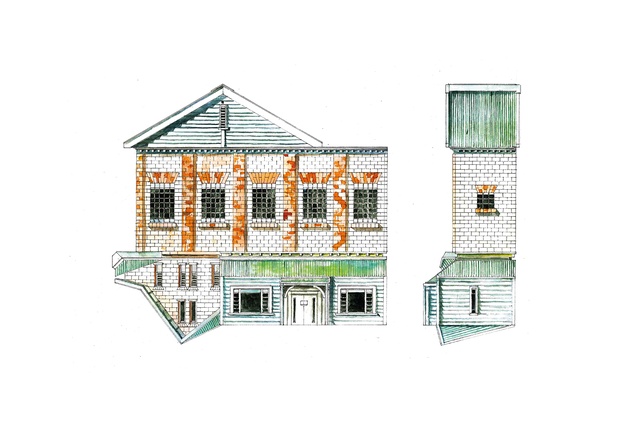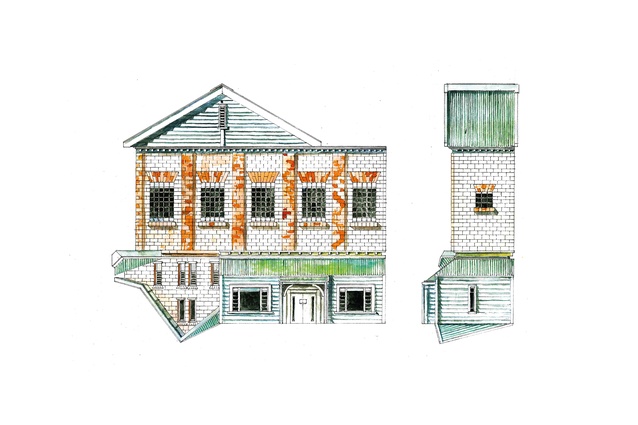What water?
Karamia Müller takes the long view when considering the politics of the built realm.
Who’s up for screaming into the void? I’m just kidding; well, I’m not and I am. OK, this requires more context. My sister and I had a barney about a couple of months ago and the down-pressure system between our two islands is, I would say, Baltic. I am guessing you need more context here as well. Without subjecting you to a time line of sibling grievances, a good place to start would be the column.
As you may or may not know, I have been writing about housing on and off for two or so years. Interspersed have been columns about other salient matters. Regardless of the subject, the columns betray something personal and it is not hard to take a punt about where I might sit on the political spectrum. My sister typically disagrees with me on what should be prioritised by the state. I wish I could tell you that we discuss who we vote for and why, openly, with rigorous debate that is informed, critical and well communicated. Without getting into it, let’s just say it is most definitely not that. Reader, I wish I were a better person but, often, I am not. It is as if, in our differences, we have the shortest view. I am yet to apologise for our recent conflict some two months on.
If you were to view us through the lens of housing, you would see a renter and a landlord. Should you switch housing for the interlinked but separate issue of capital gains tax, you might see someone probably for and someone likely against. It’s not just ideological; we would both bear the material consequences in ways that are real and shape our experiences where those ideas are made real.

At the time of writing, this election season is beginning to kick off in a serious way. Labour has just released its slogan, which, um, I guess I will leave there. I am not a slogan specialist. When I first started drafting this column, National had announced its intention, should it be elected, to dismantle the Medium Density Residential Standards (MDRS). I found the news quite dispiriting. It was a bipartisan piece that I thought not only really looked at the regulatory mechanisms prohibiting housing supply but, also, maybe as importantly to me, felt uncynical, collaborative and invested in delivering change, despite ideological difference for an issue that is a bit long in the tooth.
When my peers would discuss the current government and opposition cynically, pointing to a general ineptitude around the issues of housing, I would bring up the MDRS as something that should restore faith in the state and, in particular, the current politics of this special place. We had a governing system producing bipartisan solutions for housing: imperfect always, but a demonstration that democracy has some worth, certainly. Were those the halcyon days? At times, the vibe I am feeling regarding the election of 2023 is of Lord of the Flies in workwear. Not all the time, but sometimes.

The collision of ideas has made me reflect on the politics of my own, I guess, smaller societies and other social groupings to which I am citizen. Reflecting on how the lived and the personal make their way into what we believe should organise a collective. Hence, foregrounding my familial situation. In the background to my writing, I am informed by incoming emails that there are fewer than 90 days until election day. Parties are making headlines every day with new policy proposals, critiques of one another and counter critiques. While I set out to discuss the MDRS reform proposed by the Opposition, it is, in terms of election news cycles, ancient news.
A Radio New Zealand headline on 17 July announced an election policy whereby those under 30 would be able to access their KiwiSaver accounts to pay for tenancy bonds. Which brings me neatly to my opener: who is up for screaming into the void? I wrote this line and got up to think about how to tackle this. Pacing around the kitchen I currently rent (I should note it is from a family member at a discounted rate), I thought about the best ways to lay out the relationships I see between such a policy and the realm of architecture.
“I keep thinking about how some use the example of the fish in water as analogous to existing in capitalism. The story of the fish is where one fish asks the other fish: “How’s the water?” To which the other fish replies: “What water?””
There is, of course, the bricks-and-mortar connection. But, for me, I keep thinking about how some use the example of the fish in water as analogous to existing in capitalism. The story of the fish is where one fish asks the other fish: “How’s the water?” To which the other fish replies: “What water?” This, to me, sums up how conditioned we are to think that the market is the only way to order and regulate. To the extent that a proposal that young people jeopardise their retirement savings — as the climate crisis worsens, so goodness knows what they will need to put their money towards, like flame-retardant tents that convert into life rafts and flare guns — to ask them to accommodate rising rental costs through compromising a life savings scheme that helps enter home ownership as well as build security into their retirement. I just can’t make sense of how this is a good way of thinking about attending to housing security for the next generation.
Journalist Anna Rawhiti-Connell notes in a bulletin published by The Spinoff that, if one is to factor in the gender gap of KiwiSaver balances, women will arguably be doubly disadvantaged by such policy measures. For me, further entrenching housing security into marketisation seems to run the risk of further amplifying housing inequity. You would be right to critique this discussion from two, if not more, angles: Why is this appropriate material for an opinion column in an architectural publication? And, secondly, the policy was the brainchild of the Young Nats, who are of the generation for which I, purportedly, am concerned.

Do I just not get, to use Rawhiti-Connell’s wording, to debate the policy’s merit: that it is a pragmatic, youth-driven policy during a cost-of-living crisis? To this I reply that we are all in the water but it’s not a fishbowl; it’s a pot, on a stove, turned up to high. The built realm from the technical likes of embodied carbon to the seemingly profane recycling of architecture’s high paper production, to continued policy advocacy, to culturally aware multigenerational design, to everything in between can be the ongoing actions to how conditioned we are to thinking marketisation is the only idea space for us to exist in. The market does not have to be the water. Justice, equity, community and compassion can be.1
I find myself, again, at the end of another column. And, here, the feeling is reminding myself that to think through the politics of the built realm is, also, to consider the next two to three hundred years for those to come. The long view. To place my own agency and, simultaneously, my inconsequence. And, perhaps, resignation, given such a time frame, that I ought to make nice with a sister. It is all too short. I suppose this is what the water looks like day to day. Urrghh.
References
1 Ibid.













